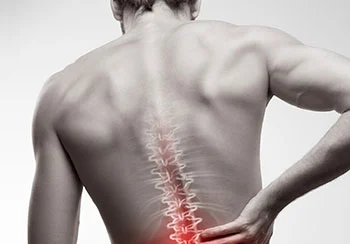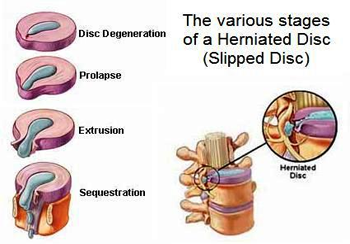Lower Back Pain
Lower back pain is a condition which can deliver lots of stress and can affect our daily habits.
It can be a terrible experience to live, as it can make many tasks difficult or impossible to take.
Here below you will find a series of questions and answers in regard to my experience with lower back pain, as a person and as a practitioner.
Q: Did/do you ever experience lower back pain?
A: Yes, I did suffer from lower back pain when I was a teenager and that was a trigger for my massage career.
Said so, at the age of 16, I was not thinking yet to become a massage therapist.
More experience was needed before I did decide to step into the massage career.
Q: How common is lower back pain within the Australian population?
A: It is estimated that in Australia between 2017 and 2018 4.0 million people did suffer from back pain, whereas 70-90% out of those 4 million did suffer from the lower back itself.
Q: What are the causes of Lower back pain?
A: Lower back pain can come from different causes. Here below are the most common:
- bulge disk
- muscle strain
- fascia tightness
- trigger points
- muscular-skeletal unbalance
- physical trauma
- stress
Q: I feel pain on my Rx or Lx side on a horizontal line. What can be?
A: That’s what we call a red flag.
A pain that spread on a horizontal line can be given by a bulging disk. More tests must be put in place to confirm a diagnosis. As a massage therapist is not in our scope of practice to diagnose a bulging disk. Our next step would be to refer you to a GP for further investigations.
Q: So, what is a bulging disk?
A: A bulging disk is a condition (hernia) where the disk that seat between the vertebrae, gets a tear in it.
As a consequence, the disk touches the nerve running along the spine and creates a pain sensation. There are 4 different stages of herniation of the disk.
- Disc protrusion
- Prolapsed disc
- Disc extrusion
- Sequestered disc.

Q: What are other symptoms related to a bulging disk (for the lower back)?
A: Other symptoms of a bulging disk (for the lower back) can be:
- Numbness in the glutes, legs, feet.
- Weakness in the leg/feet movement
- Pain increases when seating, like the disk, gets compressed and decreases if standing, like the disk, gets decompressed and less pressure is applied to the nerve root.
- Difficulties in going to urinate, it is a strong sign that there could be a bulging disk in the lower side of the lumbar area. Medical attention is urgently recommended.
Q: Why a bulging disk can occur urine blockage?
A: The nerve that controls the spasm of the bladder is rooted between L1 and L2.
Indeed, Pressure on the main root, between these 2 vertebrae, would then transform into nerve dysfunction.
This condition is called Cauda Equina Syndrome.
Q: My lower back pain moves vertically. Why is that?
A: A sign of lower back pain that moves vertically is more luckily related to muscular inflammation.
In fact, there is a group of back muscle called Erectus Spinae, (Spinalis, Longissimus, Illiocostalis) that originates in the lower side of the lumbar area and extend vertically along the cervical area.
Q: What triggers muscle inflammation?
A: Many are the reason why muscles can get inflamed.
Repetitive movements pour posture, the incorrect firing pattern of a muscle group, in specific the leg extension firing pattern.
Q: How massage can help?
A: Massage can be an effective approach to release tension along the lower back.
Given the training that I did go for, I would ensure to use the knowledge learned along the Remedial Massage and Myotherapy course to identify what back pain is related to.
Based on the finding and on the willingness of the clients, we can then disgust with the client what technique of massage they may prefer, Remedial Massage, Dry Needling (if applicable), Mobilisation (if applicable) or Thai Massage.
Even MLD can be an effective technique, as it can be used to reduce inflammation, swelling, tension and stress.
As previously mentioned, if I got suspicious of a bulging disk, I would not hesitate to refer the client to a GP for further investigation.
In regards to the Thai massage technique, I will ensure to warm up the area first with some simple passives stretch and or cupping and then work on the muscle that needs some tension released if it is safe to do so, or on the muscle surrounding the area, like gluteus, hamstrings and or shoulder muscles.
Q: Would you use your knee to massage my back?
A: The use of the knee is not compulsory. If it is safe to do so, yes, I may use my knee to massage the back. A correct and proper evaluation of the injury must be applied before doing so.
If you are in pain or even just feel tight along your lower back, don’t hesitate to book a massage appointment.
Any of the techniques offered at Melbourne Thai Treatment can be really effective in reducing pain and ache and giving you back the mobility lost.
Said so, for chronic conditions their massage can help till a certain point.
Exercises and other treatment options have to be evaluated.
Giovanni La Rocca
Giovanni moved to Melbourne, Australia, from Italy in 2008 and became a citizen in 2017. He started studying massage therapy in 2016, then completed a Bachelor of Health Science in Clinical Myotherapy in August 2024. During those years, he also specialised in Thai Massage and Manual Lymphatic Drainage for presentations like Lipedema and Lymphoedema. Nowadays, he runs his clinic in Fitzroy North, Melbourne, where he integrates movement therapy into his practice to enhance overall well-being. He also values meditation, having completed several Vipassana courses. Committed to continuous learning, he aims to share his expertise in integrated therapies to help others achieve balance and resilience.